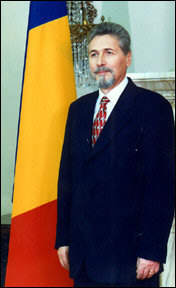 INTRODUCTION INTRODUCTION |
Romania has a long history of domination and submission. Anciently known as the Roman province of Dacia, it was abandoned by the Empire when the first barbaric herds of invaders came storming in, leaving the Dacians to fend for themselves. After that the country fell into oblivion, leaving almost no trace of its existence for nearly ten centuries. During that time and well into the XIX century, Romania, at crossroads between Europe and Asia, was ravaged and abused by Huns, Ottomans, Magyars, Polish, Saxons, Slavs, name it. Finally, in 1918, the kingdoms of Transylvania, Wallachia, and Moldavia were unified creating what today is known as Romania. It seems unfair that in 1947, only 29 years after its political unification, when the country was finally at peace and was one of the most flourishing ones in Europe, communism was forced in, culminating with the dreaded regime of president Ceausescu, one of Romania's darkest periods.
 | This brief look at history might imply that Romania is doomed. Even today the only news about the country that make headlines in the international press are negative and blown out of proportion: children begging in the streets, ecological disasters in the Danube, deadly flows that leave peasants homeless, gypsies forced to emigrate, etc. On the doors of the XXI century Romania is desperately struggling to grow out of its former condition and its pessimistic image. Fortunately this time the international community, despite some reticence, has started to back up Romania.
A good proof of it is the decision taken by the EU Council, during the December 10th 1999 Helsinki Summit, officially inviting Romania to start negotiations for its accession to the European Union. Despite this late invitation Romanians were exultant. Only a few days after this glorious event, President Emil Constantinescu publicly dismissed the former Prime Minister, Radu Vasile. This move was criticized by some, claiming that the Constitution does not entitle the President to dismiss the Prime Minister. However, after Mr. Contanstinescu's EU negotiations' triumph, he literally had free hand to carry out his plans. The reasoning behind it was clear. Romania has a skirmish and belligerent coalition government. Even the President and the former PM belong to confronted political parties. Mr. Contanstinescu wanted an outsider, someone with enough prestige and credibility to manage the state of economy and to make the necessary reforms in the shortest possible time. That could only be done by someone who did not belong to any of the bellicose political fractions. The president found his man in the ex-Governor of the National Bank, Mr. Mugur Isarescu who promptly replaced the old PM. |

